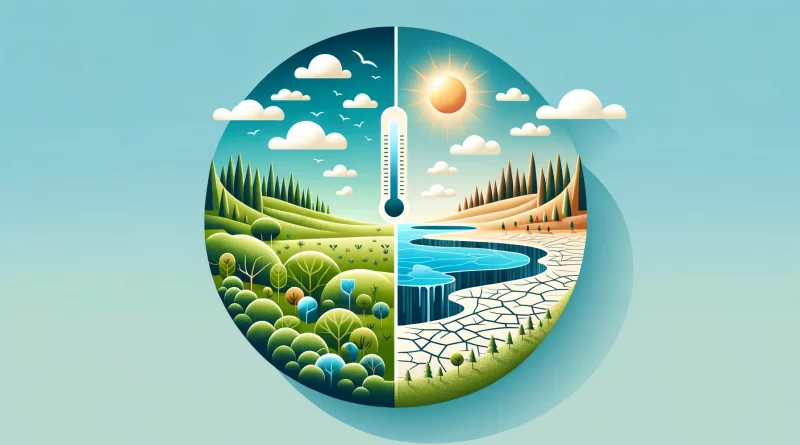12 Facts About Climate Change
Climate change is one of the most critical topics discussed today. It affects everything from weather patterns to wildlife and human life. Following is an article comprising twelve exciting facts about climate change, loaded enough to ensure that the subject is both interesting and informative to every reader. Whether a student a professional, or someone just curious, you will find the below insights valuable to understand just how critical and impacting climate change is.
1. Global Temperatures Are Rising at an Alarming Rate
Since 1880, Earth’s average surface temperature increased by about 1 degree Celsius (1.8 degrees Fahrenheit). This, although it may seem small, has had huge impacts on the environment. This increase was a significant proportion, considering the past decade to be the hottest on record.
2. Most Caused by Human Activities
Most of this recent warming is from human activities, like burning fossil fuels—coal, oil, and natural gas. Such activities release greenhouse gases, carbon dioxide, and methane into the atmosphere, which intensify the greenhouse effect and warm the planet.
3. Melting Ice and Rising Sea Levels
The polar ice caps and glaciers are melting at unprecedented rates. The region is warming at more than twice the rate of the rest of the world, causing significant ice loss. Most of this melted ice contributes to rising sea levels that have, since 1880, been increased by an estimated amount of about 8 inches (20 centimeters). Projections estimate that by 2100, sea levels could increase by 1 to 4 feet, threatening world coastal regions.
4. More Extreme Weather Events
Climate change is associated with more frequent and severe extreme weather occurrences. This includes stronger hurricanes, extended droughts, severe heat waves, and heavy rainfall events that cause flooding. These events are destructive to communities, ecosystems, and economies.
5. Ocean Acidification is becoming more of an issue.
Oceans absorb about 30% of carbon dioxide produced by humans, leading to ocean acidification. This process lowers the pH of seawater, impacting marine life, especially organisms such as corals and shellfish with skeletons and shells made of calcium carbonate.
6. Global Warming vs. Climate Change
Throughout most conversations, “global warming” and “climate change” are used interchangeably; however, they mean two different things. Global warming is the long-term heating of the Earth’s surface, and climate change is more than just global warming—it involves broader changes, such as shifting rain patterns and an increased frequency of severe weather events.
This is also having critical effects on the biodiversity of the regions. Many species retreat to more frigid areas, and others go extinct because they cannot rapidly adapt to the new conditions. This can result in less biodiversity and disruptions in the ecosystems and their services, like in cases where it damages pollination and water functions.
8. Human Health
Climate change brings about many health hazards. Rising temperatures create heat-related illnesses and death, as well as changes in the weather patterns. This causes a significant risk in the transfer of diseases of infection, exacerbates respiratory problems, and lessens safe water supply. Extreme weather conditions also cause an increased number of injuries and mass displacement.
9. Agriculture
Climate change puts the agricultural yield in danger. Climate change modifies the temperature and rainfall patterns, which leads to changes in crop failures. Crops can fail as a result of either droughts or flooding; thus, shifting climate changes could modify the growing seasons. These developments heavily affect food security, especially in regions with a preexisting food provision problem.
10. Economic Costs
The economic impacts of climate change are varied. Extreme weather patterns have cost billions in lost infrastructure and property. Further, the agricultural sector, fisheries, and tourism sectors all experience losses based on changing environmental reports. Mitigation and adaptation measures are of the essence in reducing these economic impacts.
11. Future Projections
Based on current trends, our Earth’s temperature could rise from 2 to 4 degrees Celsius (3.6 to 7.2 degrees Fahrenheit) by the end of this century. This would mean even more adverse impacts of the changing climate, high sea levels, extreme weather, and biodiversity loss. Urgent action must be taken to reduce greenhouse gas emissions and limit global warming.
12. Global Efforts on Climate Change
To combat climate change, international cooperation is much demanded. International agreements, such as the Paris Agreement, aim at maintaining global warming well below 2 degrees Celsius above pre-industrial levels. Efforts to reduce greenhouse gas emissions, transition into renewable sources of energy, and enhance climate resilience are a must in the process of effectively combating climate change.
What Did We Learn Today?
Facts on climate change need to be understood to take the necessary actions towards saving our planet. Tackling the root causes and having effective mitigation and adaptation mechanisms will be essential to secure a sustainable future.

